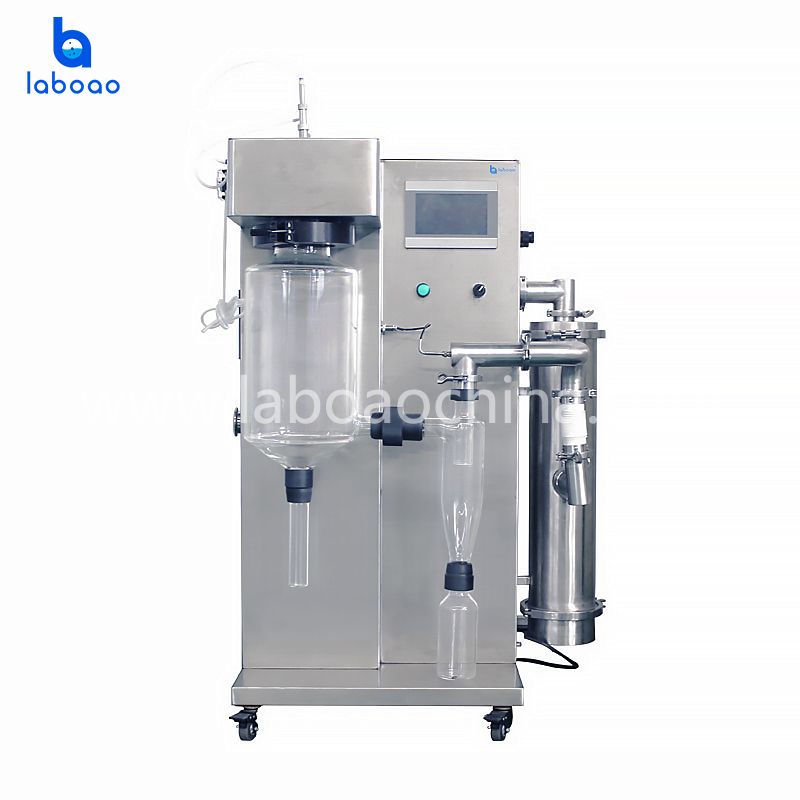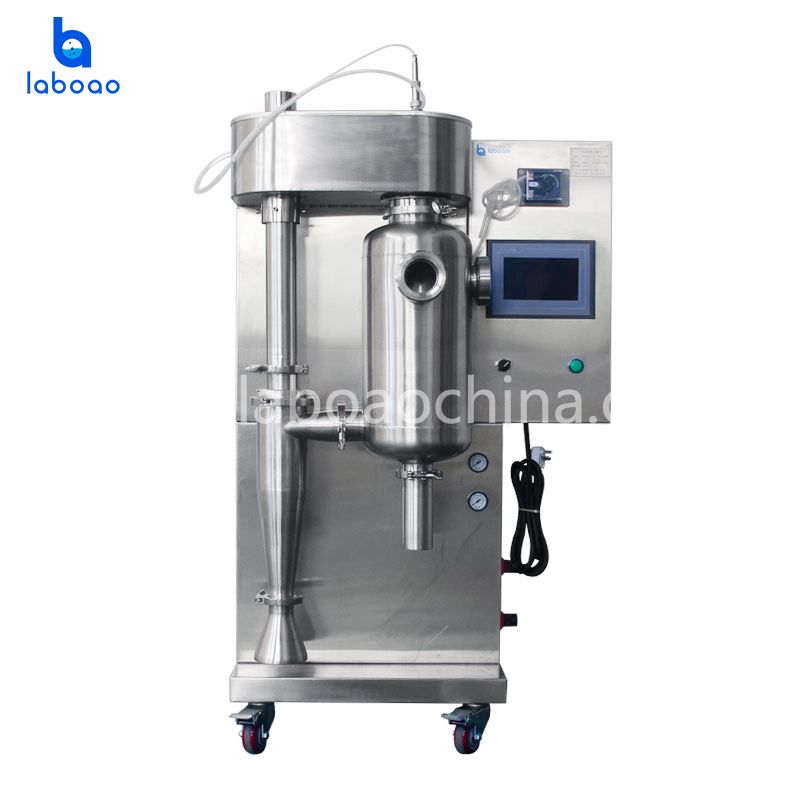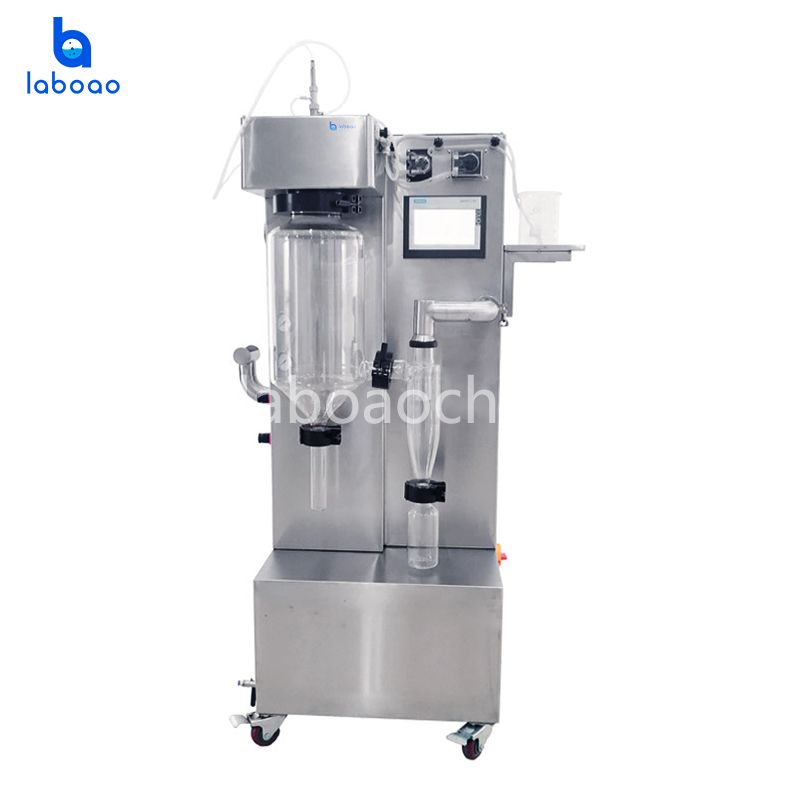Basic process of using a small spray dryer
The small spray dryer can be divided into three basic process stages: atomization of the feed liquid, contact and drying of the mist and drying medium; and separation of the dried product from the exhaust gas.
1. The atomized liquid of the liquid is atomized into small droplets, and the purpose of atomization is to disperse the liquid into tiny droplets with a large specific surface area. After zeroing, enter the drying tower and adjust to hot air. The water in the zero droplets will evaporate quickly. Dry into powder or granules in a very short time. The size and uniformity of the droplets have a great influence on the quality of the product, especially the drying of heat sensitive materials. If the size of the sprayed droplets is not uniform, some large particles will not reach the drying requirement, and the small particles will deteriorate due to excessive drying. Therefore, the zeroifier used for zeroing of the feed liquid is a key component of the zero-drying process. Commonly used atomizers are airflow, pressure and rotary.
2. The contact between the mist droplets and the drying medium and the drying of the mist droplets are sprayed into the hot air, which has a certain speed and is in contact with the air, and this process is also a process of heat and mass transfer. The contact between the droplets and the air is in the form of parallel flow, counter flow and mixed flow. The direction of movement of the droplets is the same as that of the air. The opposite direction of movement is called the countercurrent movement direction. The opposite direction is the same, that is, the countercurrent and the parallel flow are called the mixed flow. The manner in which the droplets are in contact with the air is related to the location of the atomizer in the tower and the location of the hot air inlet. The way the droplets are in contact with the air has a great influence on the temperature distribution in the drying tower, the movement trajectory of the droplets and particles, the product size and moisture.
The drying process of the droplets also undergoes a constant speed phase and a slowdown phase. At the constant velocity stage, water evaporation occurs at the surface of the droplet, and the rate of evaporation is controlled by the rate of diffusion of the vapor through the surrounding membrane. The driving force is the temperature difference between hot air and droplets. The larger the temperature difference, the greater the drying rate. When the rate of diffusion of moisture is reduced and the water is insufficient to maintain evaporation of the surface, the drying enters a slowdown phase.
3. Dry product and exhaust gas separation The spray-dried product is powder. Most of them use a cyclone separator and a bottom discharge, and some of the fine powder is discharged with the exhaust gas. In order to increase product yield and reduce production costs, it is necessary to increase separation equipment to collect fine powder, and in order to protect the environment, the exhaust gas must comply with environmental protection emission standards. Separation equipment generally has a bag filter, a cyclone separator, a venturi scrubber, an electrostatic precipitator, and the like. Various methods can be combined to perform multi-stage separation operation, which can classify products and improve separation efficiency.
Spray dryers are becoming more and more widely used in the machinery market, and the market demand is also growing. Spray dryers are widely used in many industries such as food, pharmaceutical, and chemical industries. At the same time, with the continuous improvement of industrial production technology and consumer requirements, people have also put forward higher technical requirements for spray drying equipment.




